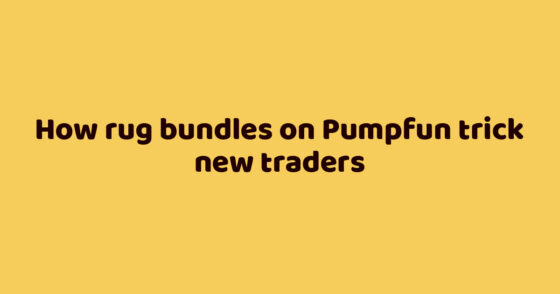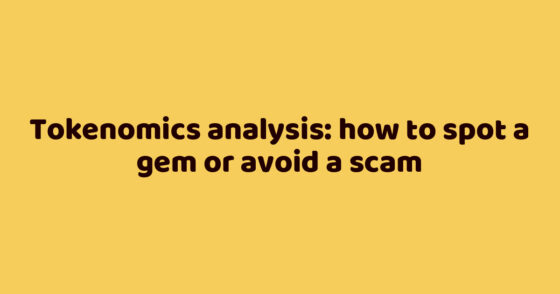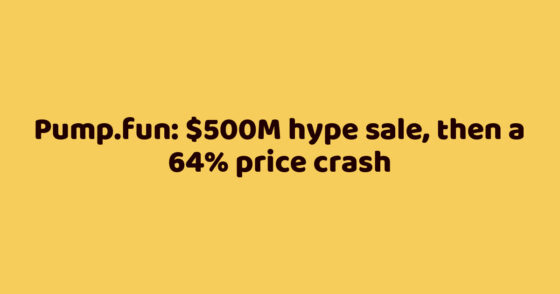Introduction
The Ambassador Program is a program where you help develop a project and possibly or guaranteed the project will reward you later.
Before you activate in any project, conduct your own reserch – it will help you not to get caught on scams and pump up your reserch skills, which will be useful in the future.
Orientation in the English environment is the most important nuance, because it is required for all jobs and tasks.
Types of ambassador programs
Ambassadors also has its own conditional types, it’s good that there are not many of them. The only thing that is not convenient is that each project makes its own conditions and there are no clear types of Ambassador, but the approximate can still be distinguished.
Community Bounty Program
This is the most common Ambassador program, where you fill out a form —> have a full or mini interview —> the results of the interview + your portfolio will decide on the admission to the Ambassador of the project.
Usually, in this type, you need to come up with your own content on what topics and in what format.
Social Bounty Program
The most affordable and easy (relatively) ambassadorship because:
- Sometimes no interview is required, or there is a mini interview.
- Sometimes they pay right away in stables for tasks, or in project tokens (which may shoot out later)
- You need to do specific tasks already.
Stable – stablecoin – stablecoin – is the most stable currency in crypto ± 1$ (like fiat dollar). The most common coins are USDC, USDT, BUSD.
Ambassadorial program tiers
The Ambassadorial Program Tier is the level of priority of the Ambassadorial Program based on its “exclusivity. This is a fuzzy concept at the moment, but it is made up of several factors:
- Ambassadorship difficulty.
- Who invested in the project.
- How much was invested in it.
- The idea for the project (also has a bit of an impact).
- Approximate rewards (if known).
The ambassadorship teardown may change depending on project updates.
Examples of ambassador programs
Tier 1 – Aleo

There are very, very many participants in the project who have done work and who are competitively capable.
Top funds contributed to this project (a16z and others).
These top funds have put $328 million into the project.
The idea is also interesting – complete decentralization and data protection at the blockchain level.
Tier 2 – Pontem Network

Payment in stablecoins for tasks (after admission to the Ambassador, perform certain tasks and depending on their quality + quantity receive stablecoins).
In Ambassador take a lot of people, most likely because of the low entry threshold.
Good funds came in – Animoca Brands, Kenetic Capital, Mechanism Capital.
Funds brought in $4.5 million in initial rounds of investments.
Not a bad idea – a decentralized application platform (dapp) built on Polkadot that connects public blockchains and ecosystems like Ethereum with Facebook’s authorized (private) Diem Blockchain project.
Tier 3 Amba – Project Hive

The project itself is P2E (Play to Earn).
Ambassador can be classified as a Social Bounty Program.
In investors range 2-3 funds: ZBS CAPITAL, Vendetta Capital, Big Brain Holdings.
Raised a total of $4.6 million in investments from seed rounds of tokens
The idea is not innovative – the usual p2e toy fighter.
Types of activities
The Ambassador application form (to be discussed later) will ask us:
- Who can we be for the project?
- What can we do for the project?
Let’s talk a little bit about this.
Creating articles
Means the creation of articles on various topics on the project, an overview of the project itself and its features.
Translating Materials
All logically – find different materials on the project and translate them. Google translator is not allowed to use, and I do not recommend it, because the quality of translation leaves much to be desired.
Creating video content
If you know how to make videos, from the banal story about the project to the super trude guide with everything you can. If not – learn how to do it.
Organizing
You can organize various activities on the project’s social networks. For example, AMA sessions, Discord flash mobs or quizzes, Twitter raids, etc.
Community moderator
Your job will be to monitor the project’s chats, answer members’ questions and be an active member of the community.
Developer
Every crypto project needs developers, especially if you have a big baggage of knowledge, the work of a developer in crypto can be diverse, from fixing bugs and up to creating a new product.
P.s even if you have little experience and little baggage of knowledge, still apply, just mark it.
Influencer
Create articles/posts/reviews/threads about the amba project and post on your social networks.
Designer
Create project pics or beautiful infographics.
Product Tester
Maximum unintelligible position, but the responsibility sort of includes testing the product/products of the project and writing feedback on the test.
How to make portfolio?
A portfolio is a folder on a cloud or other drive with the work you’ve ever done to present your skills. Think of a portfolio as your practical calling card, showing your real skills, which means that it should be approached responsibly.
Since we live in the 21st century, a cloud drive is a good solution for convenient file storage.
Create your resume
It is better to make a presentation or video, you can even in Canva, where you briefly talk about yourself and your achievements, you should not attribute much extra to yourself.
Try not to add a lot of text, better make an extra slide.
Fill in all your work
1. On the cloud drive, you can create several folders, e.g. Design, Articles, Videos. That is, create folders for categories of your works, it all depends on your imagination.
2. For the articles, you can create a separate doc or other text document where you leave links to your articles. Just don’t forget to sign which project, which article and which language it is.
Updating and enriching your portfolio. It’s okay if you have it half-empty at first, just keep cooing and creating content or even projects.
Tokenomics
If a project has/will have its own token or award in the form of tokens of its project – there should be tokenomics. Tokenomics – information in various forms (text, infographics) about the distribution of project tokens on the market and between participants.
Venture capital
Funds are organizations that invest in a project for its development.
There is a certain list of funds, where you can see almost all the information about the fund. It is very useful for resourcing. There is also a site where you can see the investors in the project + data on the investor.
Why is it important to have good funds in the project investors?
At least, if the project has “such and such” funds, on breaks of their shares in tokens they can immediately drain their tokens, shedding the price (and this will negatively affect both the price and our profit).
What is the profit of the funds?
Seed round – the initial stage of selling project tokens to large investors with the blocking of their shares for a certain period of time. As their shares are unlocked from all purchased tokens on the seed round are guaranteed to be X’s, hence the profit.
Don’t forget that funds have failed investments as well, so don’t blindly fly into a project where they are listed.
The presence of good funds is a definite plus to the project, not a signal to participate.
Ambassador program rewards
Depending on the type of project and amba, there are several types of rewards:
- In stabelcoins.
- In NFT (if the project has them)
- In allocations for early purchase of tokens (can give good X’s, but check tokenomics)
- In the project tokens themselves (potentially, they can also give good public sale tokens, but again, check tokenomics)
Allocation to buy tokens is an opportunity for an investor to buy issued tokens at minimum prices.
Award Info
🔘 Community Bounty Program.
Often this info is not mentioned inprinpip, ie neither on the site, nor in chats, or anywhere else. In this case, be careful, look at the range of the project, investors and only speculate, whether it pours something or not.
🔘 Social Bounty Program.
Everything should be better, i.e. at least info in chats about rewards, ideally – everywhere, otherwise it’s not a clue.
How to find ambassador programs?
Here we will have several steps:
- Find a project.
- Researching a project.
- Get into the project.
Finding a project
There are many ways you can find out about a project:
- Told by a friend.
- Saw an ad in the entryway for the recruitment of ambassadors.
- On Twitter, you looked at posts with the hashtags #Ambassador or #Ambassador_Program.
- In the Medium we looked at articles by hashtags as from Twitter.
- In the Teletype looked at articles by the same hashtags as from Twitter, but you can also by #Ambassador / #Ambassador_Program.
Researching project
In the crypto world, there are projects that immediately announce all the information and all the plans about their product, and those that say nothing. Therefore, there are four ways:
- Read articles from other authors or from me with parses of projects or watch posts about projects (if I don’t have posts, they will)
- Independently seek all the information about the project
- Wait for the project to announce available activities (testnet, affiliate program, or other).
- Acting at random.
Let’s take a closer look at these points
The first point is probably the most convenient. You read the article, learn all the information about the project and decide whether to participate in its activity or not.
The second point is a bit difficult, because you will need to spend some time on analysis, but it is kind of productive. At the very least, you’re getting your reserach skills up and running. What you need to study in order to reserach a project on your own:
1. Project website:
🔘 Is it properly designed?
🔘 Does it work properly?
🔘 What about functionality?
🔘 What does it say?
2. Docs or Lightpaper:
🔘 Is there one?
🔘 How much is written there and how?
3. Medium/Twitter/Telegram:
🔘 For mentions of the project
4. Crunchbase of this project:
🔘 For the presence of foundations
🔘 For the presence of investments.
The third point is that you just watch the project or projects from their start. This method is convenient because you can watch several projects at once and be aware of all the events of multiple projects, but from this comes the problem – a large workload on you.
The fourth point – I do not recommend it highly, you can lose your precious time and potential profits, but if you rely on luck, then good luck to you.
Getting into the project
After finding and reserching the project, you still decided to fly, and therefore move on to the next items:
- Find a form to fill out.
- Fill out the form
- Waiting for answer.








